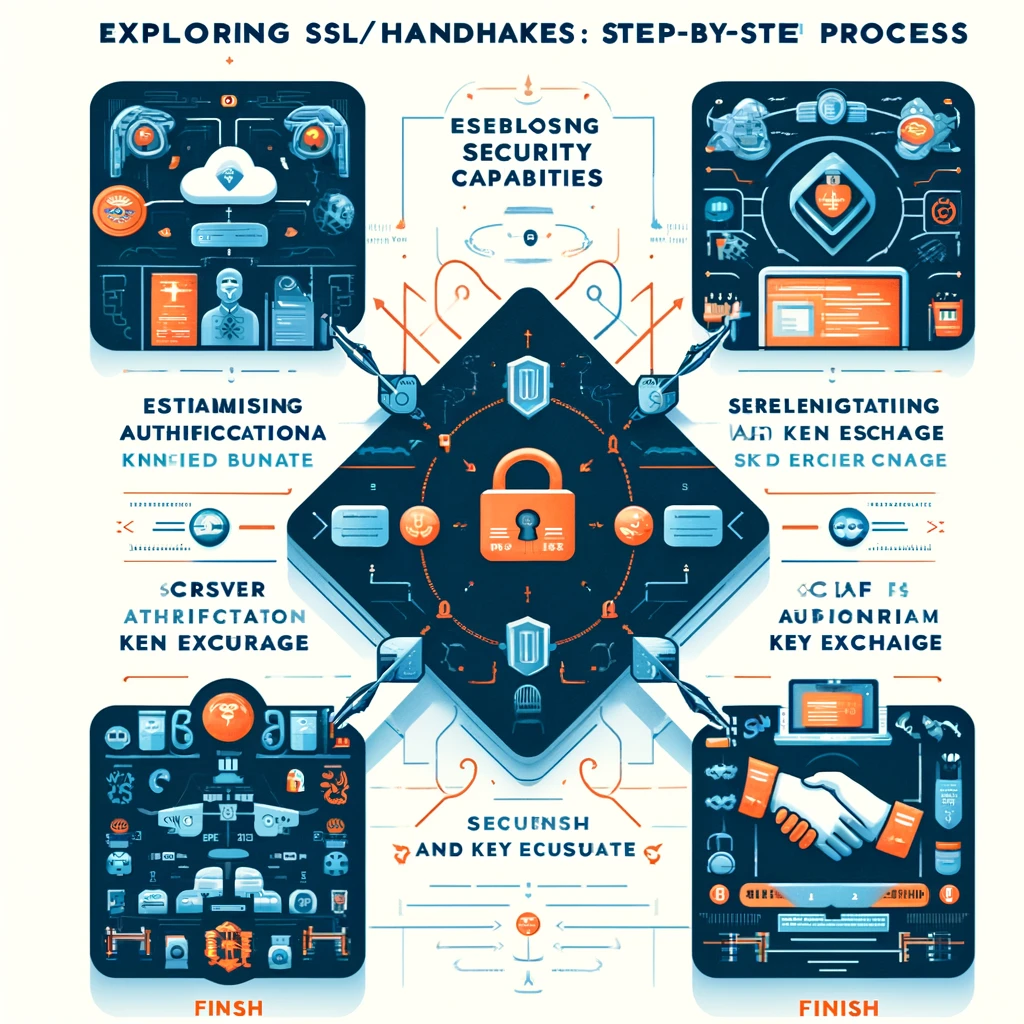Table of Contents
A detailed explanation of how SSL/TLS handshakes secure communications
The Secure Sockets Layer (SSL) and its successor, Transport Layer Security (TLS), are fundamental to secure communication over the Internet. These protocols ensure that data exchanged between a web server and a browser remains private and integral. This blog post provides a detailed, step-by-step explanation of how SSL/TLS handshakes secure communications, examining the processes and mechanisms involved.

Introduction to SSL/TLS
SSL and TLS are cryptographic protocols designed to provide secure communication over a computer network. When a server and client communicate, SSL/TLS ensures that the data sent between them is encrypted and authenticated. The SSL/TLS handshake is the process by which the server and client establish encryption settings and exchange session keys before actual data transmission begins.
The Phases of the SSL/TLS Handshake
The SSL/TLS handshake involves several steps, divided into four main phases: Establishing Security Capabilities, Server Authentication and Key Exchange, Client Authentication and Key Exchange, and Finish.
Phase 1: Establishing Security Capabilities
ClientHello Message:
The handshake begins with the client sending a ClientHello message to the server. This message includes the client’s SSL/TLS version number, a randomly generated number, a session ID, and a list of cryptographic algorithms (cipher suites) that it supports.
Additionally, the ClientHello message may include extensions, detailing additional capabilities (e.g., supported elliptic curves and signature algorithms).
ServerHello Message:
In response, the server sends a ServerHello message, which includes the SSL/TLS version that will be used (aligning with the highest version supported by both client and server), the chosen cipher suite from the list provided in the ClientHello, a session ID, and a new randomly generated number.
The server also includes its own list of supported extensions, confirming or negotiating additional capabilities.
Phase 2: Server Authentication and Key Exchange
Server Certificate:
The server sends its digital certificate to the client. This certificate contains the server’s public key and is signed by a trusted certificate authority (CA). The client uses this certificate to authenticate the server’s identity.
The server may also request a certificate from the client for mutual authentication, though this is less common.
Server Key Exchange:
Depending on the chosen cipher suite, the server may send a ServerKeyExchange message. This message is crucial for establishing a shared secret necessary for encryption.
This message contains key exchange parameters, signed with the server’s private key, allowing the client to verify the integrity and origin of the key exchange data.
Server Hello Done:
This message indicates that the server has finished sending messages to support the key exchange, and the client should begin its part of the handshake.
Phase 3: Client Authentication and Key Exchange
Client Certificate (if requested):
If the server has requested client authentication, the client sends its digital certificate to the server.
Client Key Exchange:
The client responds with a ClientKeyExchange message, which typically includes information encrypted with the server’s public key that will allow both the client and server to compute the same encryption keys.
The specifics of this message depend on the key exchange algorithm selected during the ServerHello.
Certificate Verify (if client certificate sent):
This message is used to provide explicit verification of the client certificate. This step involves the client signing a piece of data that is unique to this handshake and known by both the client and server.
Phase 4: Finishing the Handshake
Change Cipher Spec:
Both the client and server send a ChangeCipherSpec message, signaling that subsequent messages will be encrypted using the keys and algorithms previously specified.
Finished Message:
Both parties exchange Finished messages, which are encrypted and contain a hash and signature over all the previous handshake messages. This step verifies that the key exchange and authentication processes were successful.
Application Data:
Once the handshake is successfully completed, the secure transmission of application data begins, encrypted under the agreed parameters.
Conclusion
The SSL/TLS handshake is crucial for establishing a secure session between a client and a server. Each step in the handshake contributes to a robustly secure communication channel, ensuring confidentiality, data integrity, and authentication. Understanding this process is vital for anyone involved in securing networks, developing secure systems, or managing cybersecurity. By employing SSL/TLS protocols, organizations can protect the transmission of sensitive data across potentially insecure networks like the internet.
Go Blog Home
